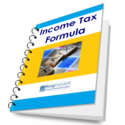The government wants to encourage us to travel more and explore our country, and wants to assist us. That’s why it gives a favourable income tax treatment to allowance given to us for travel. We actually get income tax benefit for tourism! Read on.
Most salaried people get a special allowance for taking vacations, called Leave Travel Allowance (It is also known as Leave Travel Concession or Leave Travel Assistance).
This LTA / LTC has income tax benefits associated with it, provided you meet certain conditions. Let’s understand the income tax treatment of LTA / LTC better.
What is Leave Travel Allowance / Leave Travel Concession (LTA / LTC)?
This is a special allowance that most salaried people get. This allowance is meant for traveling – you are expected to utilize it to spend it for tourism-related travel expenses.
It can be given out every year, or once every 2 or 4 years. Many organizations also allow you to accumulate this allowance for 2 years.
Income tax and LTA / LTC
The LTA / LTC that you get is fully exempt from income tax, provided it satisfies certain conditions. Here are the conditions:
The amount is actually spent on travel
You have to actually spend this amount on transportation. The spending can be for you and your family members, but you have to be one of the travelers.
Here, family means spouse and children (including adopted children and stepchildren). Parents, brothers and sisters are also included if they are dependent on you.
It has to be for transportation
The amount has to be spent on transportation – either air, rail or road.
Any amount spent for lodging and boarding is not considered. Thus, food related expenses and hotel expenses are not exempt from income tax.
Also, this exemption is for primary travel between your city of stay and your destination. Other travel expenses like taxi / cab fare, auto fare, etc. can not be claimed as exempt.
Travel within India
The travel has to be within India – foreign travel is not considered. The government wants to boost tourism within India, not international travel!
Shortest Distance and Cap on claim amount
The amount exempt would be the amount required for travel to your destination by the shortest route, depending on the mode of your travel.
If you travel by air, the maximum amount that can be claimed as exempt is the economy class air fare to your destination by the shortest route.
If you travel by rail (or road), the maximum amount that can be claimed as exempt is the air conditioned first class (AC I Class) rail fare to your destination by the shortest route.
(Please see the example at the end of the article to understand this better)
Proof of travel
Proof of travel needs to be preserved and presented to claim this exemption. The tickets are considered valid proof.
If you arrange travel through a hired or rental car, the receipt from the travel agency or car rental agency is considered valid proof. Please note that any non-transport component (like driver allowance) is not considered for income tax exemption.
LTA / LTC and Block of 4 years
Apart form the above conditions, there is one more condition that causes confusion: The LTA / LTC tax exemption can be claimed only twice in a block of 4 years.
These blocks of 4 years are predefined by the government. These are:
2002 – 2005
2006 – 2009
2010 – 2013
And so on. The current block is 2006 – 2009.
Please note that these years are calendar years, and not financial years.
(Confused by terms like financial year and assessment year? Please read “Income Tax (IT) Jargon – Financial Year (FY), Assessment Year (AY) and Previous Year (PY)” to know these terms better)
Example
Let’s understand the concept of “twice in a block of four years” through an example.
If you claim LTA exemption in 2006, then, you can claim it only once more till 2009. Thus, if you claim it again in 2007, you can not claim it before 2010, as you would have already claimed it twice in the block 2006 – 2009.
However, if you do not claim LTA exemption in 2006 and 2007, you can claim it for both 2008 and 2009, and also for 2010 and 2011, as 2010 and 2011 fall under the next block of 4 years: 2010 – 2013. Thus, it is possible to claim LTA / LTC exemption for 4 years in a row!
Carry forward of LTA / LTC Benefits
What if you can not claim LTA / LTC exemption for some reason?
No need to worry. The exemption doesn’t lapse – it can be carried forward to the next block of 4 years.
The only condition in this case is that the exemption has to be availed in the very first year of this subsequent block.
Thus, in this next block, you can claim a total of 3 exemptions!
Spouses and LTA
A question that is very commonly asked is: If both husband and wife are eligible for LTA, can both of them claim it?
Yes, they can very much claim LTA individually. The rules of LTA apply individually to each, which means that each spouse can claim LTA twice in a block of four years.
Thus, a family can claim LTA exemption four times in a block of four years if both spouses are eligible for LTA.
The only restriction is that both spouses can not claim LTA exemption for the same journey.
There is no other restriction: The LTA exemption can be claimed for the same family members, or different family members as allowed by the rules (as explained above). The family can in fact also travel twice in the same year, and each spouse can claim exemption for one journey.
(Note: The rules regarding claims by spouses might be slightly different in case of government employees. Please check with your organization / department to know the exact rules applicable if you are a government employee and claim LTC / LTA)
Example
Let’s say you and your spouse are traveling to Bangalore from Mumbai. But instead of going from Mumbai to Bangalore, you go from Mumbai to Hyderabad, and then got to Bangalore. You travel by train in the AC 3 tier category.
The cost of AC 3 tier train tickets are as follows:
Mumbai – Hyderabad: Rs. 800
Hyderabad – Bangalore: Rs. 700
Bangalore – Hyderabad: Rs. 700
Hyderabad – Mumbai: Rs. 800
Thus, you spend a total of Rs. 6,000 for two people.
Now, the shortest route to your destination in this case would be Mumbai to Bangalore. The AC First class ticket costs Rs. 2,350 for this. So, your round trip fare would have been Rs. 9,400 for two people.
The amount exempt from income tax is the lesser of these two. Thus, in this example, even when you haven’t traveled through the shortest route, you can claim income tax exemption for the full amount of Rs. 6,000.
And what about the actual allowance that you get?
Let’s say you get a leave travel allowance of Rs. 10,000. Would it be fully exempt?
No. As we saw, the amount exempt is the lesser of the amount actually spent and the fare by the defined class through the shortest distance.
Thus, the amount exempt from income tax would be Rs. 6,000. The remaining Rs. 4,000 would be taxable, and would be included in your income.
Happy traveling!





